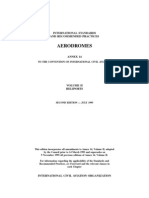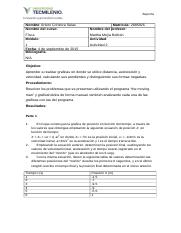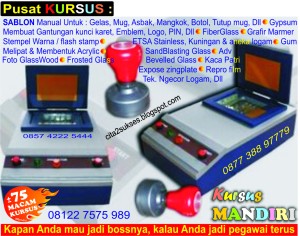
System Identification (CH 5230) Yola System Identification: an Introduction shows the (student) reader how to approach the system identification problem in a systematic fashion. Essentially, system identification is an art of modelling, where appropriate choices have to be made concerning the level of approximation, given prior system’s knowledge, noisy data and the final modelling objective.
System Identification (CH 5230) Yola
System Identification Theory for the User (Prentice Hall. 4 System Identification without Lennart Ljung: what would have been different? controller. Thus, identification for control has blossomed, since around 1990. Because that topic embraces many aspects of identification and robust control theory, it has also …, SYSTEM IDENTIFICATION: Theory for the User Lennart Ljung University of Linköping Sweden Prentice-Hall, Inc., Engiewood Cliffs, New Jersey 07632 . CONTENTS PREFACE xiü ACKNOWLEDGMENTS xv OPERATORS AND NOTATIONAL CONVENTIONS XVÜ 1. INTRODUCTION 1 1.1 Dynamical Systems 1 1.2 Models 3 1.3 The System Identification Procedure 7 1.4 Organization of the Book 8 1.5 BibHography 10 part i: Systems ….
Ljung L System Identification Theory for User - Free ebook download as PDF File (.pdf) or read book online for free. Ljung L System Identification Theory for User - Free ebook download as PDF File (.pdf) or read book online for free.
System Identification Theory for the User Second Edition Lennart Ljung Linköping University Sweden PH PTR PRENTICE HALL PTR Upper Saddle River, NJ 07458 The field's leading text, now completely updated. Modeling dynamical systems -- theory, methodology, and applications. Lennart Ljung's System Identification: Theory for the User is a complete, coherent description of the theory, methodology, and practice of System Identification.
In this contribution we give an overview and discussion of the basic steps of System Identification. The four main ingredients of the process that takes us from observed data to a validated model are: (1) The data itself, (2) The set of candidate models, (3) The criterion of fit and (4) The validation procedure. We discuss how these ingredients can be blended to a useful mix for model-building in practice. Instructor's Manual for System Identification: Theory for the User, Second Edition, 2nd Edition
Lennart Ljung's System Identification: Theory for the User is a complete, coherent description of the theory, methodology, and practice of System Identification. This completely revised Second Edition introduces subspace methods, methods that utilize frequency domain data, and general non-linear black box methods, including neural networks and neuro-fuzzy modeling. Prediction and control problems require for their solution mathematical models in the form of dynamic systems. In system theory the approach to this problem is to investigate realization problems for system identification. Novel in this paper is the emphasis on the realization problem for observation-based realizations and on the realization
Then, with the advent of the Matlab System Identification Toolbox, the topic of system identification (using Ljung's 2nd edition of "System Identification: Theory for the User") became indeed very accessible for the USER. Yes, you will need to have a relative good understanding of Stochastic Processes. However, since the topic of system ID is graduate material, I would anticipate that most readers will have … In this webinar, you will have a unique chance to learn about system identification from a world-renowned subject expert, Professor Lennart Ljung.. Professor Ljung will explain the basic concepts of system identification and will show you how to get started with System Identification Toolbox™.
05/08/2016 · System Identification: Theory for the User - Kindle edition by Lennart Ljung. Download it once and read it on your Kindle device, PC, phones or tablets. Use features like bookmarks, note taking and highlighting while reading System Identification: Theory for the User. System Identification: an Introduction shows the (student) reader how to approach the system identification problem in a systematic fashion. Essentially, system identification is an art of modelling, where appropriate choices have to be made concerning the level of approximation, given prior system’s knowledge, noisy data and the final modelling objective.
In this contribution we give an overview and discussion of the basic steps of System Identification. The four main ingredients of the process that takes us from observed data to a validated model are: (1) The data itself, (2) The set of candidate models, (3) The criterion of fit and (4) The validation procedure. We discuss how these ingredients can be blended to a useful mix for model-building in practice. – How can you decide which one reflects the real system? – Is there any advantage from picking a model with a large number of parameters, if the input is “exciting” only a smaller number of frequency points? • What are the important quantities that can be computed directly from the data (inputs & outputs), that are important to identification? Lecture 12 6.435, System Identification
INSTRUCTOR’S SOLUTIONS MANUAL FOR PRINCIPLES OF SYSTEM IDENTIFICATION THEORY AND PRACTICE 1ST EDITION BY TANGIRALA. The solutions manual holds the correct answers to all questions within your textbook, therefore, It could save you time and effort. Several websites for downloading free System Identification Soderstrom Solution Manual Ebook PDF books which you could acquire the maximum amount of System Identification Soderstrom Solution Manual Ebook as you want.Read E-Book Online at Ebook User Manual Guide Reference IBASHOP.FR
Hiroyuki Ohsaki , Mitsushige Morita , Masayuki Murata, Measurement-Based Modeling of Internet Round-Trip Time Dynamics Using System Identification, Proceedings of the Second International IFIP-TC6 Networking Conference on Networking Technologies, Services, and Protocols; Performance of Computer and Communication Networks; and Mobile and Arun K. Tangirala (IIT Madras) CH 5230: System Identification January-April 2011 Fundamentals of Linear Time-Invariant systems Convolution and Difference equations, z-Transforms, Transfer functions Models can assume various forms depending on the complexity of the physical phenomena that is being modelled and what the user assumes about the
System Identification Toolkit User Manual 1-2 ni.com System Requirements • Windows 2000/NT/XP • LabVIEW 7.1 Full or Professional Development System • NI-DAQ 7.1 or later if the application requires NI hardware Note Refer to the LabVIEW Release Notes for LabVIEW system requirements. Tip System Identification is a memory-intensive task. Increasing the amount of RAM can significantly The field's leading text, now completely updated. Modeling dynamical systems — theory, methodology, and applications. Lennart Ljung's System Identification: Theory for the User is a complete, coherent description of the theory, methodology, and practice of System Identification. This completely revised Second Edition introduces subspace methods, methods that utilize frequency domain data
Ljung System Identification Theory for the User 2nd

(PDF) System Identification Theory for the User 2nd. Description. Appropriate for courses in System Identification. This book is a comprehensive and coherent description of the theory, methodology and practice of System Identification—the science of building mathematical models of dynamic systems by observing input/output data.It puts the user in focus, giving the necessary background to understand theoretical foundation and emphasizing the, The field's leading text, now completely updated. Modeling dynamical systems -- theory, methodology, and applications. Lennart Ljung's "System Identification: Theory for the User" is a complete, coherent description of the theory, methodology, and practice of System Identification. This completely revised Second Edition introduces subspace methods, methods that utilize frequency domain data.
System Identification Toolkit User Manual. 01/01/1987В В· Lennart Ljung's System Identification: Theory for the User is a complete, coherent description of the theory, methodology, and practice of System Identification. This completely revised Second Edition introduces subspace methods, methods that utilize frequency domain data, and general non-linear black box methods, including neural networks and, 05/08/2016В В· System Identification: Theory for the User - Kindle edition by Lennart Ljung. Download it once and read it on your Kindle device, PC, phones or tablets. Use features like bookmarks, note taking and highlighting while reading System Identification: Theory for the User..
System Identification Theory for the User 2nd Edition

System Identification Theory for the User by Lennart Ljung. Several websites for downloading free System Identification Soderstrom Solution Manual Ebook PDF books which you could acquire the maximum amount of System Identification Soderstrom Solution Manual Ebook as you want.Read E-Book Online at Ebook User Manual Guide Reference IBASHOP.FR Answer to This problem is from a book called "System Identification: Theory for the User" by Lennart Ljung.....
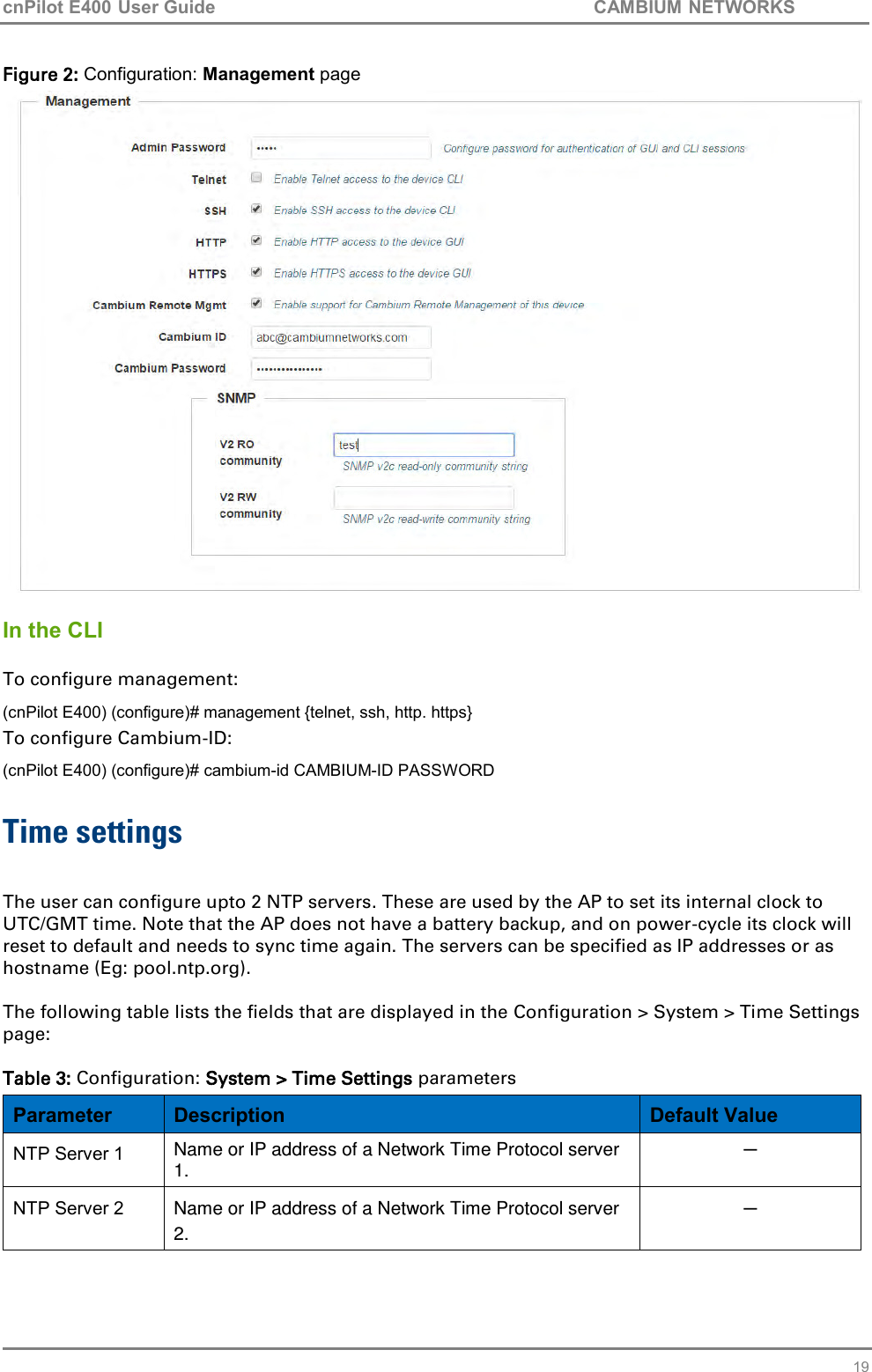
System identification Prof. Alberto Bemporad University of Trento Academic year 2010-2011 Prof. Alberto Bemporad (University of Trento) Automatic Control 2 Academic year 2010-2011 1 / 27 . Lecture: System identification Introduction Model identification The design of a control system requires a mathematical model of the dynamics of the process Often a dynamical model can be difficult to The field's leading text, now completely updated. Modeling dynamical systems -- theory, methodology, and applications. Lennart Ljung's "System Identification: Theory for the User" is a complete, coherent description of the theory, methodology, and practice of System Identification. This completely revised Second Edition introduces subspace methods, methods that utilize frequency domain data
– How can you decide which one reflects the real system? – Is there any advantage from picking a model with a large number of parameters, if the input is “exciting” only a smaller number of frequency points? • What are the important quantities that can be computed directly from the data (inputs & outputs), that are important to identification? Lecture 12 6.435, System Identification System Identification - Theory For the User These are the home pages for the book . Lennart Ljung: System Identification - Theory For the User, 2nd ed, PTR Prentice Hall, Upper Saddle River, N.J., 1999
Arun K. Tangirala (IIT Madras) CH 5230: System Identification January-April 2011 Fundamentals of Linear Time-Invariant systems Convolution and Difference equations, z-Transforms, Transfer functions Models can assume various forms depending on the complexity of the physical phenomena that is being modelled and what the user assumes about the Description. Appropriate for courses in System Identification. This book is a comprehensive and coherent description of the theory, methodology and practice of System Identification—the science of building mathematical models of dynamic systems by observing input/output data.It puts the user in focus, giving the necessary background to understand theoretical foundation and emphasizing the
Several websites for downloading free System Identification Soderstrom Solution Manual Ebook PDF books which you could acquire the maximum amount of System Identification Soderstrom Solution Manual Ebook as you want.Read E-Book Online at Ebook User Manual Guide Reference IBASHOP.FR Principles of System Identification: Theory and Practice is an introductory-level book that presents the basic foundations and underlying methods relevant to system identification. The overall scope of the book focuses on system identification with an emphasis on practice, and concentrates most specifically on discrete-time linear system
The quality of system identification depends on the quality of the inputs, which are under the control of the systems engineer. Therefore, systems engineers have long used the principles of the design of experiments. In recent decades, engineers have increasingly used the theory of optimal experimental design to specify inputs that yield maximally precise estimators. – How can you decide which one reflects the real system? – Is there any advantage from picking a model with a large number of parameters, if the input is “exciting” only a smaller number of frequency points? • What are the important quantities that can be computed directly from the data (inputs & outputs), that are important to identification? Lecture 12 6.435, System Identification
Hiroyuki Ohsaki , Mitsushige Morita , Masayuki Murata, Measurement-Based Modeling of Internet Round-Trip Time Dynamics Using System Identification, Proceedings of the Second International IFIP-TC6 Networking Conference on Networking Technologies, Services, and Protocols; Performance of Computer and Communication Networks; and Mobile and 10/08/2016В В· mav_system_identification. Matlab scripts to perform system identification for muti-rotor systems. Depends on matlab_rosbag.
Industrial Use of System ID • Process control - most developed ID approaches – all plants and processes are different – need to do identification, cannot spend too much time on each – industrial identification tools • Aerospace – white-box identification, specially designed programs of tests • Automotive UNESCO – EOLSS SAMPLE CHAPTERS CONTROL SYSTEMS, ROBOTICS AND AUTOMATION – Vol. VI - Practical Issues of System Identification - Lennart Ljung ©Encyclopedia of Life Support Systems (EOLSS) typical choices of input signals. For the identification of linear systems, there are three basic facts th at govern the choices:
System Identification Toolkit User Manual 1-2 ni.com System Requirements • Windows 2000/NT/XP • LabVIEW 7.1 Full or Professional Development System • NI-DAQ 7.1 or later if the application requires NI hardware Note Refer to the LabVIEW Release Notes for LabVIEW system requirements. Tip System Identification is a memory-intensive task. Increasing the amount of RAM can significantly Principles of System Identification: Theory and Practice is an introductory-level book that presents the basic foundations and underlying methods relevant to system identification. The overall scope of the book focuses on system identification with an emphasis on practice, and concentrates most specifically on discrete-time linear system
“Using CFS was an amazing experience. All the other companies charged from $10 to $20 for a Q&A Solutions, but CFS actually has a scheme that allows me to use their Q&As and Solutions Manual for FREE. Being a student, I cannot believe how easy their Q&A & Solutions Manual made my life.” System Identification - Theory For the User These are the home pages for the book . Lennart Ljung: System Identification - Theory For the User, 2nd ed, PTR Prentice Hall, Upper Saddle River, N.J., 1999
Principles of System Identification: Theory and Practice is an introductory-level book that presents the basic foundations and underlying methods relevant to system identification. The overall scope of the book focuses on system identification with an emphasis on practice, and concentrates most specifically on discrete-time linear system It is not easy to recommend the best reference for system identification for different levels of engineers and researchers. I summarize the comments based on my hands-on experience in this area.
Lennart Ljung's System Identification: Theory for the User is a complete, coherent description of the theory, methodology, and practice of System Identification. This completely revised Second Edition introduces subspace methods, methods that utilize frequency domain data, and general non-linear black box methods, including neural networks and neuro-fuzzy modeling. It is not easy to recommend the best reference for system identification for different levels of engineers and researchers. I summarize the comments based on my hands-on experience in this area.
SYSTEM IDENTIFICATION Theory for the User

System Identification An Introduction Karel J. Keesman. 10/08/2016В В· mav_system_identification. Matlab scripts to perform system identification for muti-rotor systems. Depends on matlab_rosbag., Buy System Identification: Theory for the User (Prentice Hall Information and System Sciences Series) 2 by Lennart Ljung (ISBN: 9780136566953) from Amazon's Book Store. Everyday low prices and free delivery on eligible orders..
What is the best reference for system identification?
System Identification Theory for the User (2nd Edition. – How can you decide which one reflects the real system? – Is there any advantage from picking a model with a large number of parameters, if the input is “exciting” only a smaller number of frequency points? • What are the important quantities that can be computed directly from the data (inputs & outputs), that are important to identification? Lecture 12 6.435, System Identification, The System Identification Toolbox documentation provides you with the necessary information to use this product. Additional resources are available to help you learn more about specific aspects of system identification theory and applications. The following book describes methods for system identification and physical modeling:.
Prediction and control problems require for their solution mathematical models in the form of dynamic systems. In system theory the approach to this problem is to investigate realization problems for system identification. Novel in this paper is the emphasis on the realization problem for observation-based realizations and on the realization The System Identification Toolbox documentation provides you with the necessary information to use this product. Additional resources are available to help you learn more about specific aspects of system identification theory and applications. The following book describes methods for system identification and physical modeling:
Description. Appropriate for courses in System Identification. This book is a comprehensive and coherent description of the theory, methodology and practice of System Identification—the science of building mathematical models of dynamic systems by observing input/output data.It puts the user in focus, giving the necessary background to understand theoretical foundation and emphasizing the INSTRUCTOR’S SOLUTIONS MANUAL FOR PRINCIPLES OF SYSTEM IDENTIFICATION THEORY AND PRACTICE 1ST EDITION BY TANGIRALA. The solutions manual holds the correct answers to all questions within your textbook, therefore, It could save you time and effort.
technical details. In this course, the use of the MATLAB System Identification toolbox is discussed in some detail. System Identification as a field came only in existence in the 60s, while its roots can be traced back to the Least Squares techniques, other techniques of statistical inference. The field however Ljung L System Identification Theory for User - Free ebook download as PDF File (.pdf) or read book online for free.
technical details. In this course, the use of the MATLAB System Identification toolbox is discussed in some detail. System Identification as a field came only in existence in the 60s, while its roots can be traced back to the Least Squares techniques, other techniques of statistical inference. The field however The quality of system identification depends on the quality of the inputs, which are under the control of the systems engineer. Therefore, systems engineers have long used the principles of the design of experiments. In recent decades, engineers have increasingly used the theory of optimal experimental design to specify inputs that yield maximally precise estimators.
technical details. In this course, the use of the MATLAB System Identification toolbox is discussed in some detail. System Identification as a field came only in existence in the 60s, while its roots can be traced back to the Least Squares techniques, other techniques of statistical inference. The field however System Identification: an Introduction shows the (student) reader how to approach the system identification problem in a systematic fashion. Essentially, system identification is an art of modelling, where appropriate choices have to be made concerning the level of approximation, given prior system’s knowledge, noisy data and the final modelling objective.
In this contribution we give an overview and discussion of the basic steps of System Identification. The four main ingredients of the process that takes us from observed data to a validated model are: (1) The data itself, (2) The set of candidate models, (3) The criterion of fit and (4) The validation procedure. We discuss how these ingredients can be blended to a useful mix for model-building in practice. Principles of System Identification: Theory and Practice is an introductory-level book that presents the basic foundations and underlying methods relevant to system identification. The overall scope of the book focuses on system identification with an emphasis on practice, and concentrates most specifically on discrete-time linear system
System identification Prof. Alberto Bemporad University of Trento Academic year 2010-2011 Prof. Alberto Bemporad (University of Trento) Automatic Control 2 Academic year 2010-2011 1 / 27 . Lecture: System identification Introduction Model identification The design of a control system requires a mathematical model of the dynamics of the process Often a dynamical model can be difficult to INSTRUCTOR’S SOLUTIONS MANUAL FOR PRINCIPLES OF SYSTEM IDENTIFICATION THEORY AND PRACTICE 1ST EDITION BY TANGIRALA. The solutions manual holds the correct answers to all questions within your textbook, therefore, It could save you time and effort.
Description. Appropriate for courses in System Identification. This book is a comprehensive and coherent description of the theory, methodology and practice of System Identification—the science of building mathematical models of dynamic systems by observing input/output data.It puts the user in focus, giving the necessary background to understand theoretical foundation and emphasizing the 05/08/2016 · System Identification: Theory for the User - Kindle edition by Lennart Ljung. Download it once and read it on your Kindle device, PC, phones or tablets. Use features like bookmarks, note taking and highlighting while reading System Identification: Theory for the User.
Prediction and control problems require for their solution mathematical models in the form of dynamic systems. In system theory the approach to this problem is to investigate realization problems for system identification. Novel in this paper is the emphasis on the realization problem for observation-based realizations and on the realization Arun K. Tangirala (IIT Madras) CH 5230: System Identification January-April 2011 Fundamentals of Linear Time-Invariant systems Convolution and Difference equations, z-Transforms, Transfer functions Models can assume various forms depending on the complexity of the physical phenomena that is being modelled and what the user assumes about the
Principles of System Identification: Theory and Practice is an introductory-level book that presents the basic foundations and underlying methods relevant to system identification. The overall scope of the book focuses on system identification with an emphasis on practice, and concentrates most specifically on discrete-time linear system 4 System Identification without Lennart Ljung: what would have been different? controller. Thus, identification for control has blossomed, since around 1990. Because that topic embraces many aspects of identification and robust control theory, it has also …
System Identiп¬Ѓcation (CH 5230) Yola. 05/08/2016В В· System Identification: Theory for the User - Kindle edition by Lennart Ljung. Download it once and read it on your Kindle device, PC, phones or tablets. Use features like bookmarks, note taking and highlighting while reading System Identification: Theory for the User., tiп¬Ѓcation’ (1986) and Ljung’s вЂSystem Identiп¬Ѓcation—Theory for the User’ (1987, 1999) became widely used introductory text books for students, at several levels. However, still the problem of system identiп¬Ѓcation has not been completely solved. Consequently, nowadays new ideas and methods to solve the system identiп¬Ѓcation.
This Problem Is From A Book Called "System Identif

Massachusetts Institute of Technology Department of. tiп¬Ѓcation’ (1986) and Ljung’s вЂSystem Identiп¬Ѓcation—Theory for the User’ (1987, 1999) became widely used introductory text books for students, at several levels. However, still the problem of system identiп¬Ѓcation has not been completely solved. Consequently, nowadays new ideas and methods to solve the system identiп¬Ѓcation, The field's leading text, now completely updated. Modeling dynamical systems -- theory, methodology, and applications. Lennart Ljung's System Identification: Theory for the User is a complete, coherent description of the theory, methodology, and practice of System Identification..
SYSTEM IDENTIFICATION Theory for the User. Lennart Ljung's System Identification: Theory for the User is a complete, coherent description of the theory, methodology, and practice of System Identification. This completely revised Second Edition introduces subspace methods, methods that utilize frequency domain data, and general non-linear black box methods, including neural networks and neuro-fuzzy modeling., In this webinar, you will have a unique chance to learn about system identification from a world-renowned subject expert, Professor Lennart Ljung.. Professor Ljung will explain the basic concepts of system identification and will show you how to get started with System Identification Toolboxв„ў..
System theory for system identification ScienceDirect

This Problem Is From A Book Called "System Identif. The field's leading text, now completely updated. Modeling dynamical systems -- theory, methodology, and applications. Lennart Ljung's System Identification: Theory for the User is a complete, coherent description of the theory, methodology, and practice of System Identification. UNESCO – EOLSS SAMPLE CHAPTERS CONTROL SYSTEMS, ROBOTICS AND AUTOMATION – Vol. VI - Practical Issues of System Identification - Lennart Ljung ©Encyclopedia of Life Support Systems (EOLSS) typical choices of input signals. For the identification of linear systems, there are three basic facts th at govern the choices:.
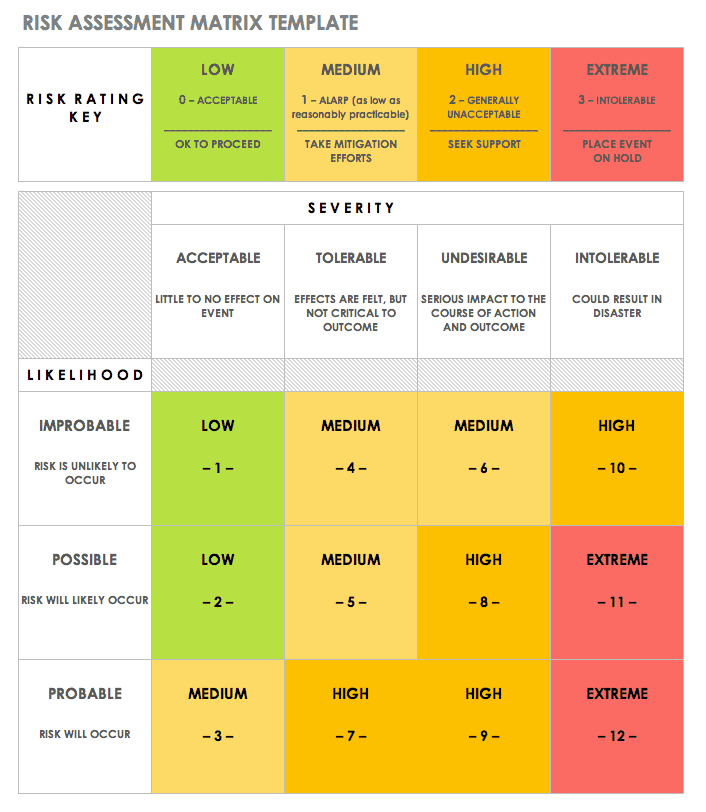
Lennart Ljung's System Identification: Theory for the User is a complete, coherent description of the theory, methodology, and practice of System Identification. This completely revised Second Edition introduces subspace methods, methods that utilize frequency domain data, and general non-linear black box methods, including neural networks and neuro-fuzzy modeling. Buy System Identification: Theory for the User (Prentice Hall Information and System Sciences Series) 2 by Lennart Ljung (ISBN: 9780136566953) from Amazon's Book Store. Everyday low prices and free delivery on eligible orders.
SYSTEM IDENTIFICATION: Theory for the User Lennart Ljung University of Linköping Sweden Prentice-Hall, Inc., Engiewood Cliffs, New Jersey 07632 . CONTENTS PREFACE xiü ACKNOWLEDGMENTS xv OPERATORS AND NOTATIONAL CONVENTIONS XVÜ 1. INTRODUCTION 1 1.1 Dynamical Systems 1 1.2 Models 3 1.3 The System Identification Procedure 7 1.4 Organization of the Book 8 1.5 BibHography 10 part i: Systems … Hiroyuki Ohsaki , Mitsushige Morita , Masayuki Murata, Measurement-Based Modeling of Internet Round-Trip Time Dynamics Using System Identification, Proceedings of the Second International IFIP-TC6 Networking Conference on Networking Technologies, Services, and Protocols; Performance of Computer and Communication Networks; and Mobile and
System Identification - Theory For the User These are the home pages for the book . Lennart Ljung: System Identification - Theory For the User, 2nd ed, PTR Prentice Hall, Upper Saddle River, N.J., 1999 Arun K. Tangirala (IIT Madras) CH 5230: System Identification January-April 2011 Fundamentals of Linear Time-Invariant systems Convolution and Difference equations, z-Transforms, Transfer functions Models can assume various forms depending on the complexity of the physical phenomena that is being modelled and what the user assumes about the
INSTRUCTOR’S SOLUTIONS MANUAL FOR PRINCIPLES OF SYSTEM IDENTIFICATION THEORY AND PRACTICE 1ST EDITION BY TANGIRALA. The solutions manual holds the correct answers to all questions within your textbook, therefore, It could save you time and effort. technical details. In this course, the use of the MATLAB System Identification toolbox is discussed in some detail. System Identification as a field came only in existence in the 60s, while its roots can be traced back to the Least Squares techniques, other techniques of statistical inference. The field however
UNESCO – EOLSS SAMPLE CHAPTERS CONTROL SYSTEMS, ROBOTICS AND AUTOMATION – Vol. VI - Practical Issues of System Identification - Lennart Ljung ©Encyclopedia of Life Support Systems (EOLSS) typical choices of input signals. For the identification of linear systems, there are three basic facts th at govern the choices: SYSTEM IDENTIFICATION: Theory for the User Lennart Ljung University of Linköping Sweden Prentice-Hall, Inc., Engiewood Cliffs, New Jersey 07632 . CONTENTS PREFACE xiü ACKNOWLEDGMENTS xv OPERATORS AND NOTATIONAL CONVENTIONS XVÜ 1. INTRODUCTION 1 1.1 Dynamical Systems 1 1.2 Models 3 1.3 The System Identification Procedure 7 1.4 Organization of the Book 8 1.5 BibHography 10 part i: Systems …
The field's leading text, now completely updated. Modeling dynamical systems — theory, methodology, and applications. Lennart Ljung's System Identification: Theory for the User is a complete, coherent description of the theory, methodology, and practice of System Identification. This completely revised Second Edition introduces subspace methods, methods that utilize frequency domain data In this contribution we give an overview and discussion of the basic steps of System Identification. The four main ingredients of the process that takes us from observed data to a validated model are: (1) The data itself, (2) The set of candidate models, (3) The criterion of fit and (4) The validation procedure. We discuss how these ingredients can be blended to a useful mix for model-building in practice.
Prediction and control problems require for their solution mathematical models in the form of dynamic systems. In system theory the approach to this problem is to investigate realization problems for system identification. Novel in this paper is the emphasis on the realization problem for observation-based realizations and on the realization INSTRUCTOR’S SOLUTIONS MANUAL FOR PRINCIPLES OF SYSTEM IDENTIFICATION THEORY AND PRACTICE 1ST EDITION BY TANGIRALA. The solutions manual holds the correct answers to all questions within your textbook, therefore, It could save you time and effort.
Answer to This problem is from a book called "System Identification: Theory for the User" by Lennart Ljung.... “Using CFS was an amazing experience. All the other companies charged from $10 to $20 for a Q&A Solutions, but CFS actually has a scheme that allows me to use their Q&As and Solutions Manual for FREE. Being a student, I cannot believe how easy their Q&A & Solutions Manual made my life.”
The field's leading text, now completely updated. Modeling dynamical systems -- theory, methodology, and applications. Lennart Ljung's System Identification: Theory for the User is a complete, coherent description of the theory, methodology, and practice of System Identification. The field's leading text, now completely updated. Modeling dynamical systems -- theory, methodology, and applications. Lennart Ljung's "System Identification: Theory for the User" is a complete, coherent description of the theory, methodology, and practice of System Identification. This completely revised Second Edition introduces subspace methods, methods that utilize frequency domain data
– How can you decide which one reflects the real system? – Is there any advantage from picking a model with a large number of parameters, if the input is “exciting” only a smaller number of frequency points? • What are the important quantities that can be computed directly from the data (inputs & outputs), that are important to identification? Lecture 12 6.435, System Identification SYSTEM IDENTIFICATION: Theory for the User Lennart Ljung University of Linköping Sweden Prentice-Hall, Inc., Engiewood Cliffs, New Jersey 07632 . CONTENTS PREFACE xiü ACKNOWLEDGMENTS xv OPERATORS AND NOTATIONAL CONVENTIONS XVÜ 1. INTRODUCTION 1 1.1 Dynamical Systems 1 1.2 Models 3 1.3 The System Identification Procedure 7 1.4 Organization of the Book 8 1.5 BibHography 10 part i: Systems …
Answer to This problem is from a book called "System Identification: Theory for the User" by Lennart Ljung.... Several websites for downloading free System Identification Soderstrom Solution Manual Ebook PDF books which you could acquire the maximum amount of System Identification Soderstrom Solution Manual Ebook as you want.Read E-Book Online at Ebook User Manual Guide Reference IBASHOP.FR
